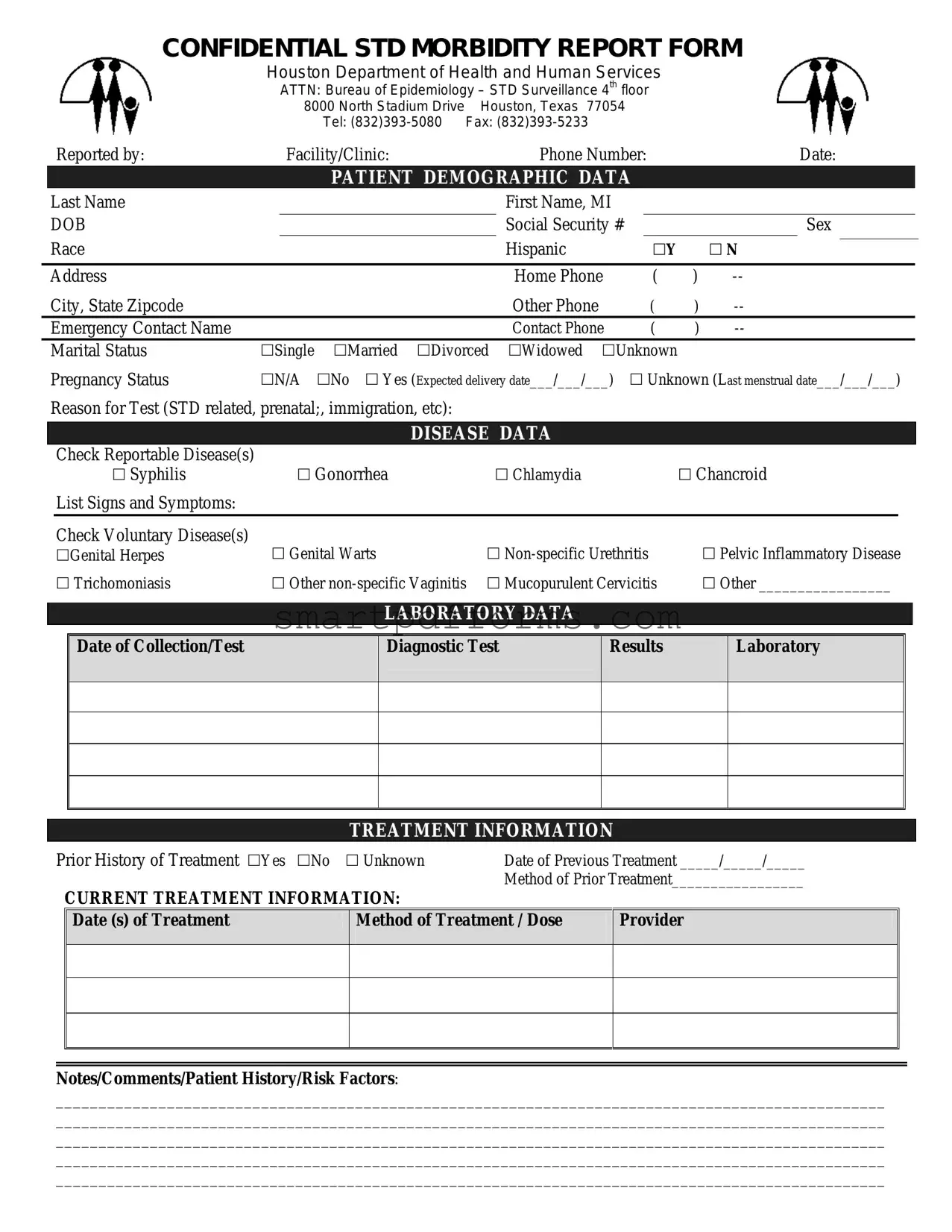The Confidential STD Morbidity Report Form serves as a critical instrument for the Houston Department of Health and Human Services, particularly within the Bureau of Epidemiology's STD Surveillance team located on the fourth floor at 8000 North Stadium Drive, Houston, Texas. This document is designed to capture comprehensive information regarding individuals diagnosed with sexually transmitted diseases (STDs), encompassing various facets from patient demographic data, reason for testing, through to specific disease data, laboratory results, and treatment information. Facilities or clinics are mandated to fill out detailed sections including patient's name, date of birth, social security number, contact information, and more nuanced data like race, Hispanic origin, and pregnancy status. Moreover, the form requires specifics on the test's motivation, whether it's STD related, prenatal, immigration purposes, etc., and outlines a section for noting down the reportable disease(s) such as Syphilis, Gonorrhea, Chlamydia, or Chancroid among others, alongside symptoms present. Additionally, it addresses voluntary disease reporting, previous treatment history, current treatment protocols including the method and dates of treatment, and any pertinent notes concerning the patient's medical or risk history. This systemic approach underscores the city's proactive measures towards STD surveillance, management, and containment efforts, facilitated through meticulous reporting and data collection practices.

